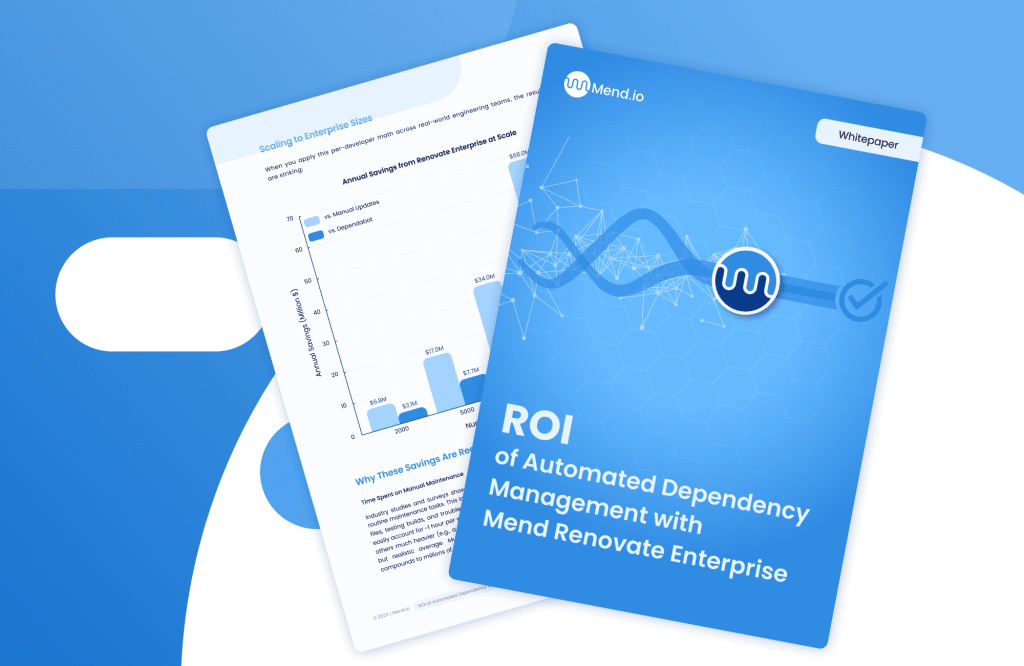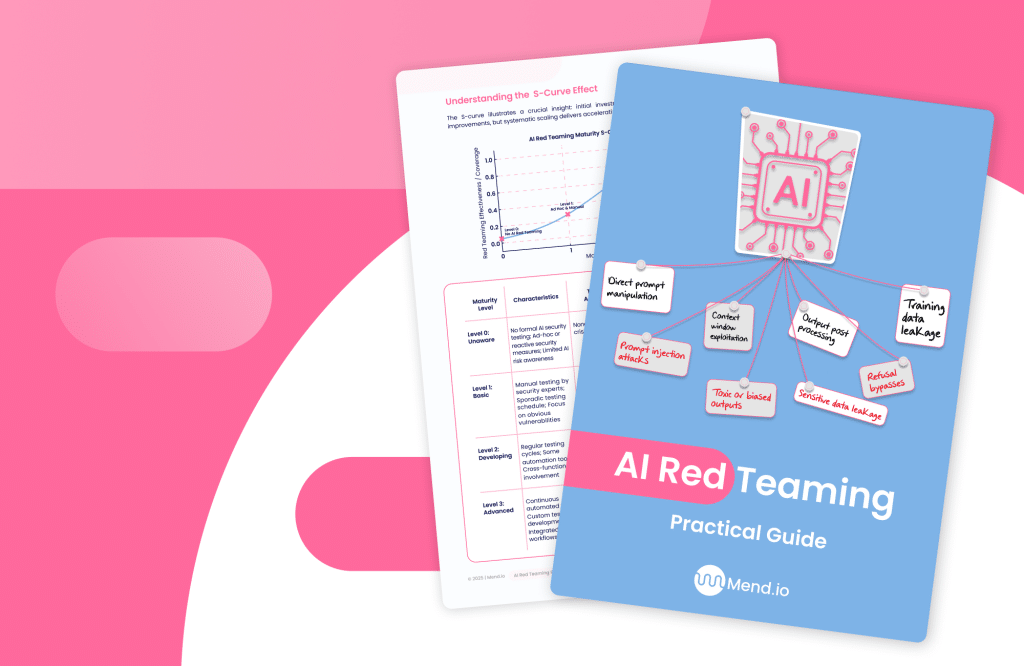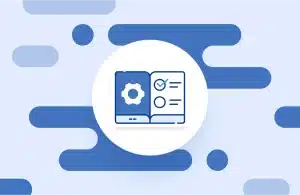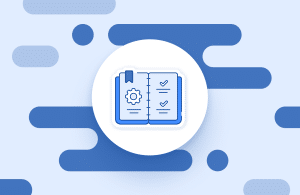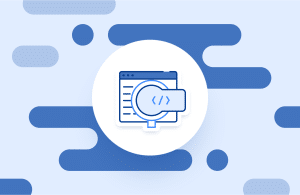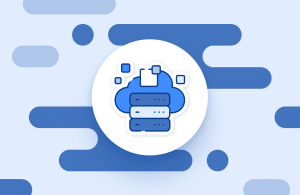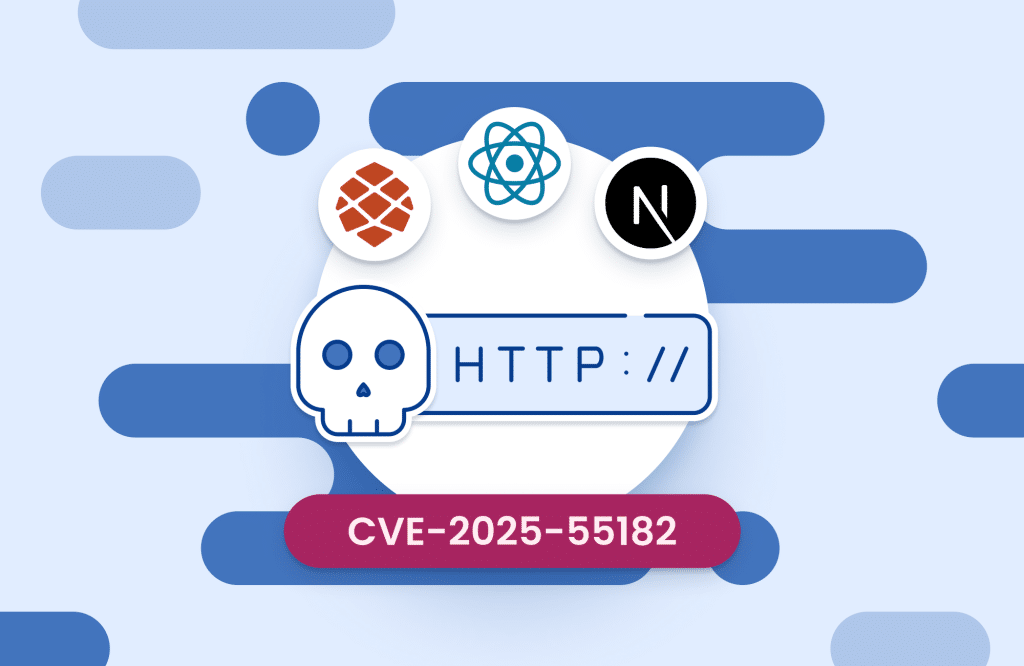Table of contents
Application Security Testing: Security Scanning and Runtime Protection Tools
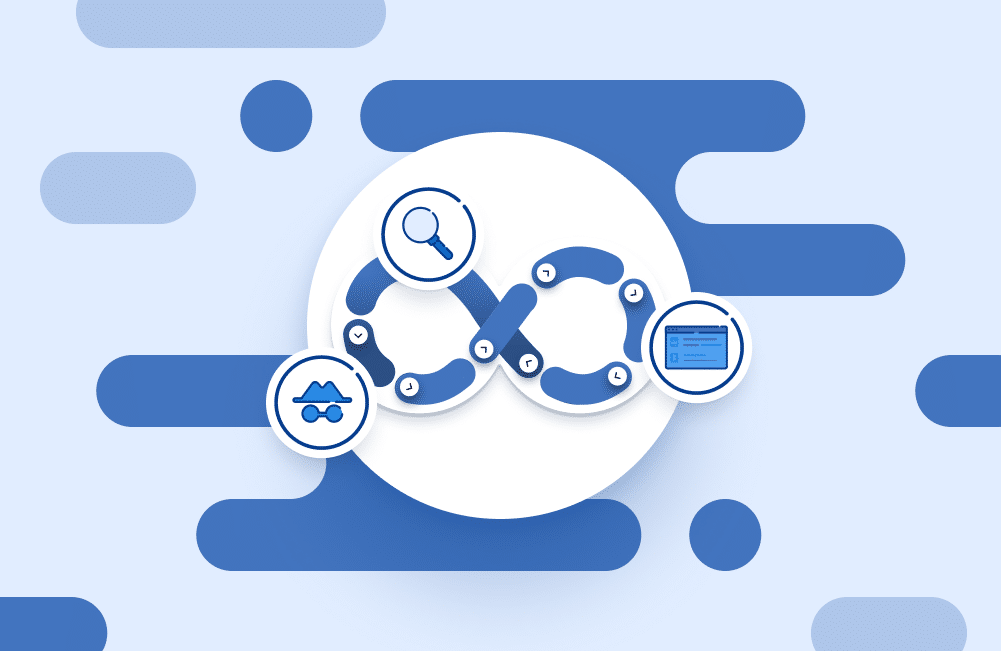
What is application security testing?
Application security testing (AST) is the process of identifying and fixing security vulnerabilities in software applications. It ensures that applications are protected against threats such as unauthorized access, data breaches, and code manipulation.
The application layer continues to be the most attacked and hardest to defend in the enterprise software stack. With the proliferation of tools aimed at preventing an attack, it’s no wonder the global application security testing (AST) market is valued at US 33.7 billion.
Forrester’s market taxonomy breaks up the application security testing tools market into two main categories:
- Security scanning tools used to remediate vulnerabilities while applications are still in development.
- Runtime protection tools, operating when applications are in production, which are considered an extra layer of protection, not an alternative to scanning.
Commonly used categories of application security tools include static application security testing (SAST), which analyzes source code for vulnerabilities, and dynamic application security testing (DAST), which tests running applications for security flaws. Software composition analysis (SCA) tools can identify vulnerabilities and other risks in third-party components.
Learn more about security testing.
Why is application security important?
Application security is a critical part of any cybersecurity strategy, because modern business operations rely on software applications:
- Protects sensitive data: Applications often store personal, financial, and business-critical information. Security testing helps prevent data breaches that can lead to identity theft or financial loss.
- Maintains customer trust: Users expect their information to be safe. A single security incident can damage a reputation and erode customer confidence.
- Ensures business continuity: Attacks on applications can disrupt services, leading to downtime and lost revenue. Secure applications help maintain operations without interruptions.
- Reduces Legal and Compliance Risks: Many industries are subject to regulations like GDPR, HIPAA, or PCI DSS. Application security testing tools helps ensure compliance and avoid fines or legal action.
- Lowers remediation costs: Fixing vulnerabilities during development is much cheaper than addressing them after deployment or after a breach has occurred.
- Defends against evolving threats: Cyber threats constantly change. Regular security testing keeps applications resilient against new attack methods.
Application security testing methods
Black box security testing
Black box security testing assesses an application purely from an external perspective. Testers have no internal knowledge of the system’s architecture, source code, or design. Instead, they interact with the application’s user interfaces, APIs, and network endpoints, mimicking the behavior of real attackers.
The goal is to find vulnerabilities such as SQL injection, cross-site scripting (XSS), authentication bypass, and improper error handling. Testers use a mix of manual techniques and automated tools like vulnerability scanners and fuzzers. Black box testing is valuable for identifying security issues in the deployed environment, including server misconfigurations and exposed services.
Gray box security testing
Grey box security testing provides testers with limited, controlled access to the application’s internal structures. This could include login credentials, API documentation, architectural diagrams, or partial source code. The goal is to enable more focused and efficient testing than black-box methods without the full transparency of white box testing.
With this hybrid approach, testers can design more intelligent attack scenarios, based on partial knowledge of how the application should work. This enables the discovery of vulnerabilities in authentication mechanisms, session management, business logic, and backend integrations that might be missed by purely external tests.
White box security testing
White box security testing involves complete visibility into the application’s inner workings. Testers have full access to the source code, system architecture, configuration files, and other internal documentation. They can analyze how data flows through the system, how access controls are implemented, and how external inputs are validated and processed.
Common techniques in white box testing include code reviews, static application security testing (SAST), control flow analysis, and threat modeling. This method can uncover deep security flaws like insecure cryptographic implementations, race conditions, and flawed business logic.
Because of its depth, white box testing is the most thorough way to identify security risks early in the development lifecycle.
Types of application security scanning tools
Security scanning tools are used primarily in development, with applications being tested as they are designed and built. The goal of security scanning tools is prevention. These tools identify and remediate vulnerabilities in applications before they run in a production environment. Tools in this market include SAST, DAST, IAST, and SCA.
1. Static application security testing (SAST)
Static application security testing (SAST) is whitebox testing, where source code is analyzed from the inside out while components are at rest. SAST analyzes application source code, byte code, and binaries for coding and design flaws that suggest possible security vulnerabilities.
The most mature of all application security testing tools, SAST scans code at rest and is usually implemented during development and QA. Often, it is integrated into CI servers and integrated development environments (IDEs).
With SAST, scans are based on a set of predetermined rules that define the coding errors in the source code that need to be assessed. SAST scans can be designed to identify some of the most common security vulnerabilities, including SQL injection, input validation, and stack buffer overflows.
2. Dynamic application security testing (DAST)
Dynamic application security testing (DAST) is blackbox testing that looks for security vulnerabilities and architectural weaknesses by simulating external attacks on an application while the application is running. It attempts to penetrate an application from the outside by checking its exposed interfaces for vulnerabilities and flaws. As such, it has no access to source code and can uncover vulnerabilities only through external attacks.
The dynamic part of DAST’s name comes from the test being performed in a dynamic environment. Unlike SAST, which scans an application’s code line by line when the application is at rest, DAST testing is executed while the application is running. While DAST can be used in production, testing is usually carried out in a QA environment.
3. Interactive application security testing (IAST)
Interactive application security testing (IAST) scans an application’s source code post-build in a dynamic environment. Testing occurs in real time while the application is running, usually in a QA or test environment. Because IAST is analyzing source code, testing is able to identify the problematic line of code and notify the developer for immediate remediation.
Although both SAST and IAST look directly at code, IAST does so post-build in a dynamic environment through the instrumentation of the code. Agents and sensors are deployed in the application, analyzing code to identify vulnerabilities. IAST can be easily integrated into the CI/CD pipeline, is highly scalable, and can be either automated or performed by a human tester.
4. Software composition analysis (SCA)
Software composition analysis (SCA) tools perform automated scans of an application’s code base to provide visibility into open source software usage. This includes identifying all open source components, their license compliance data, and security vulnerabilities. In addition to providing visibility into open source software use, SCA tools also prioritize open source vulnerabilities and ideally provide insights and auto remediation to resolve security threats.
5. Mobile application security testing (MAST)
Mobile application security testing (MAST) focuses on identifying and mitigating security vulnerabilities unique to mobile apps. MAST combines techniques from static, dynamic, and forensic analysis to assess both the application’s code and its runtime behavior on mobile devices.
During static analysis, MAST tools examine the app’s source code or binary files for vulnerabilities like insecure data storage, hardcoded credentials, or improper encryption use. Dynamic analysis tests the app while running on a device or emulator, identifying flaws like insecure communication, runtime manipulation, or API vulnerabilities. Some MAST solutions also perform behavioral analysis, monitoring how an app interacts with device resources such as file systems, cameras, and sensors.
Types of runtime protection tools
Runtime protection tools are designed to ward off attacks while an application is running in a production environment. These tools react in real time to defend against malicious agents. This market is segmented into web application firewalls (WAF), bot management, and runtime application self-protection (RASP).
6. Web application firewall (WAF)
Web application firewalls (WAFs) filter, monitor, and block HTTP traffic to and from web applications, protecting against a variety of common application layer attacks such as cross-site scripting (XSS) and SQL injection. In essence, a WAF stands in front of a web application, acting as a shield between the application and the internet. Unlike regular firewalls that act as a safety gate between servers, WAFs filter the content of specific web applications to thwart malicious attacks in real time.
WAFs operate through policies that protect against vulnerabilities in an application by filtering out malicious traffic. Policies can be quickly and easily modified to respond to differing attack vectors. For example, rate limiting can be implemented during a DDoS attack.
7. Bot management
A bot manager is software that manages bots by distinguishing between good bots and bad bots instead of simply blocking all non-human traffic. A good bot manager should be able to identify a bot’s reputation and block bots based on their IP address reputation. By analyzing bot behavior, a bot manager should be able to add good bots like Google’s Site Crawlers, which index web pages, to allowlists, while challenging bad bots using methods like a Captcha test or JavaScript injection. Bot managers can limit bots overusing a service or deny access to certain content or resources for bots identified as bad.
8. Runtime application self-protection (RASP)
Runtime application self-protection (RASP) is a security technology capable of controlling application execution and is designed to detect and prevent attacks on applications in real time from the inside. RASP prevents attacks automatically with no human intervention by “self-protecting” or reconfiguring in response to malicious input or behavior. It does this by analyzing the context of suspected malicious behavior and by continuously monitoring its own behavior to automatically detect and mitigate attacks.
RASP monitors and protects applications against a range of threats, such as SQL/command injections, cross-site scripting (XSS), data exfiltration, and account takeovers.
4 best practices for a successful AST program
Integrate security early (“shift left”)
Shifting security left means embedding security controls and testing as early as possible in the software development lifecycle. Instead of treating security as a final checkpoint before deployment, teams integrate security into the planning, design, coding, and testing phases.
Early integration helps catch vulnerabilities like injection flaws, insecure authentication, and misconfigurations before they become deeply embedded in the codebase. Tools such as static analysis (SAST), container security scanning, and infrastructure-as-code (IaC) scanning can be included in CI/CD pipelines to automate checks during development.
By shifting left, organizations reduce the cost and complexity of fixing security issues. Developers get faster feedback, improving their ability to deliver secure software without delays. It also promotes a culture where security becomes everyone’s responsibility, not just the security team’s.
Adopt secure coding standards
Secure coding standards are a set of development guidelines that help teams consistently produce code that minimizes security risks. These standards focus on proper input validation, safe handling of authentication and session management, secure error handling, and correct usage of encryption libraries.
Adopting frameworks like OWASP Secure Coding Practices or CERT’s guidelines ensures developers are aware of common pitfalls and how to avoid them. For example, standards might require parameterized queries to prevent SQL injection or mandate the use of proven libraries for encryption instead of building custom solutions.
Secure coding standards should be enforced through code reviews, automated linters, and integration into IDEs. They should be regularly updated to reflect evolving threats and new best practices. Teams that consistently apply secure coding standards significantly lower their exposure to common vulnerabilities.
Establish a security champions program
A security champions program identifies individuals within development teams who are trained to be advocates for secure coding practices. These champions serve as the first line of defense by promoting awareness, conducting peer reviews, and providing guidance on security issues as they arise.
Champions are typically experienced developers who receive additional security training, keeping them up to date on new vulnerabilities, attack patterns, and defensive techniques. They help bridge the gap between dedicated security teams and development, ensuring that security is not isolated but embedded within every sprint and release cycle.
A successful security champions program creates a decentralized security model, enabling faster detection of vulnerabilities, improving security ownership, and fostering a stronger security culture across the organization.
Monitor and analyze security metrics
Monitoring and analyzing security metrics is critical for evaluating the effectiveness of application security efforts. Important metrics include vulnerability density (vulnerabilities per thousand lines of code), time-to-remediate vulnerabilities, percentage of critical issues fixed before release, and testing coverage rates.
Security dashboards should provide real-time insights into these metrics, allowing teams to detect trends, identify areas needing improvement, and demonstrate compliance with internal or regulatory requirements. Tracking the causes of recurring vulnerabilities can help teams implement more effective preventive measures.
Metrics should not just focus on quantity but also on impact. For example, measuring how many critical vulnerabilities are found and closed before production can indicate the maturity of a development team’s security practices.
Application security testing: No one tool can do it all
The truth is, in today’s threat landscape, no one tool can do it all. Organizations need multiple tools from this list to secure their applications and minimize their risk. To help you understand the pros and cons of each of these tools, we’ve compiled a list of features and functions, showing how each tool stacks up against each other in terms of coverage, accuracy, and more.
By using a combination of these tools, you can reduce your overall security risk. Remember that there is no one perfect solution. Besides, in security, where threats are constantly evolving, perfection can be the enemy of good.
Additional guides on security testing
Together with our content partners, we have authored in-depth guides on several other topics that can also be useful as you explore the world of security testing.
DevSecOps
Authored by Mend
- 3 Devops Security Challenges And How To Overcome Them
- DevSecOps in an Agile Environment
- A Guide to Securely Managing Your DevOps Workflow
Application security
Authored by Cycognito
- 7 Steps of Web Application Penetration Testing
- Application Security: Risks, Process and Technologies
- Automated Pentesting: Pros/Cons, Key Features & 5 Best Practices
Cybersecurity solutions
Authored by Imperva
- What is Network Monitoring | Traffic Monitoring Metrics, Methods & Tools
- What is WAF | Types, Security & Features Explained
- What is SIEM | Security Information and Event Management Tools
